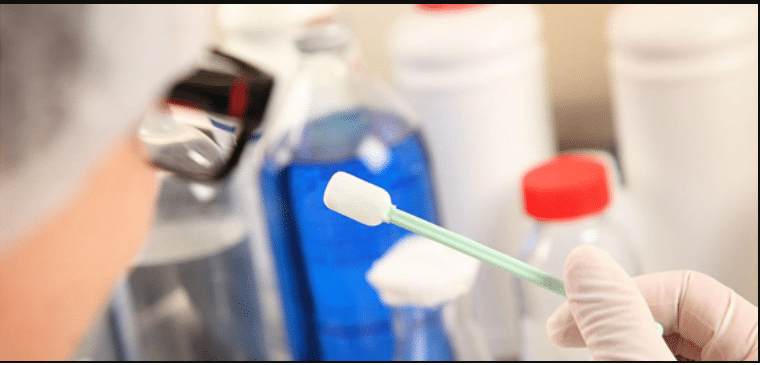Preventing of product mix-ups and cross-contamination
Contamination: The undesired introduction of impurities of a chemical or microbiological nature, or of foreign matter, into or on to a starting material or intermediate during production, sampling, packaging or repackaging, storage or transport.
Cross-Contamination: Contamination of a starting material, intermediate product or finished product with another starting material or product during production.
Objective of product mix-ups and cross-contamination
To lay down the procedure for preventing of product mix-ups and cross-contamination.
Scope of product mix-ups and cross-contamination
This procedure is applicable to all Equipment/Machine, area, materials in stores, QC and production department.
Responsibility of product mix-ups and cross-contamination
User department Person
To follow the system necessary to prevent contamination and cross contamination.
Concerned Department Head:
To ensure SOP implemented in manufacturing facility.
Quality Assurance Head:
To ensure implementation of the defined system.
Plant Head:
To ensure implementation of the defined system.
Abbreviations
SOP: Standard Operating procedure
cGMP: current Good Manufacturing Practices
PROCEDURE
Material Management
All raw materials, both actives and Excipients shall be procured only from approved suppliers.
Stores personnel receiving the material shall follow all steps with respect to handling and storage of raw materials and packing materials as per SOP respective.
Special attention shall be provided to verify and tally the labels of containers and indented items on receipt. On in-process material should specify the process stage.
While storing the material, care shall be taken to ensure segregation of different and stages like under test, approved and rejected materials.
Any rejected or obsolete materials shall be suitably disposed with in the shortest possible time and record shall be maintained accordingly.
Dispensing of the materials shall be done only after obtaining line clearance and dedicated cleaned scoops shall be used for dispensing.
Quality control of incoming materials:
QC shall follow the various steps detailed under specific sampling procedures.
Special precautions shall be taken by QC to ensure that no cross contaminations occurs while sampling.
Dedicated or appropriately cleaned sampling equipment shall only be used for sampling.
During sampling, QC personnel shall critically verify the labels on the containers.
QA Manager shall periodically carryout the review of the laboratory activities and ensure that the laboratory systems and procedures are sufficient to detect any mix-ups or cross-
contamination.
Manufacturing:
Production person receiving the materials issued by stores shall carefully verify the labels on the containers and tally them with the indent.
QA person shall crosscheck any weights and addition of materials in manufacturing.
Line clearance procedures shall be strictly followed and documented by production & QA.
Effectiveness of cleaning shall be validated, and records shall be maintained.
Adequate in-process checks shall be in place at appropriate stages to ensure that the manufacturing proceeds as per the plan.
QA shall carry out periodic reviews of all manufacturing activities to ensure that there are no potentials for mix-ups or cross contamination.
Care and precaution during products manufacturing, handling of finished products, in-process manufacturing controls, labeling controls, validated cleaning procedures,
quality control procedures in addition to general GMP compliance shall be given top priority.
Any OOS or typical results obtained by QC during the analysis of raw materials, intermediates and finished products shall be investigated in detail before the batch is accepted or released.
QA Head or his personnel shall conduct training program from time to time regarding mix-ups and cross contamination and impact of the same on the product quality. If
possible, live examples shall be given to highlight such situations.
Prevention and handling of contamination with metal objects
Restrict the use of metal like objects to the minimum.
Wherever it is unavoidable, use the metal objects with strict control. Items like knives, scissors, pins, nuts, bolts, sieves and sampling equipment’s should be used with care and caution.
Before start of operation and after completion of operation, check nuts and bolts, which are used for the equipment’s for its absence and / or loosening. Wherever nuts and bolts are loosened, the same should be tightened. In case any nuts and bolts are missing, the same should be investigated.
During regular preventive maintenance or breakdown maintenance, special attention should be given to nuts and bolts so as to prevent contamination with the same. After preventive maintenance or breakdown maintenance, QA should give line clearance to ensure that the area / equipment is free from grease, nuts, bolts and any other maintenance tools.
Man, and material movement strictly followed.
Differential pressure is maintained and at different frequency.
Minimum personnel should present in the area when handling/Processing of material take place.
unnecessary movement should be avoided.
All activities shall be followed as per defined procedures.



